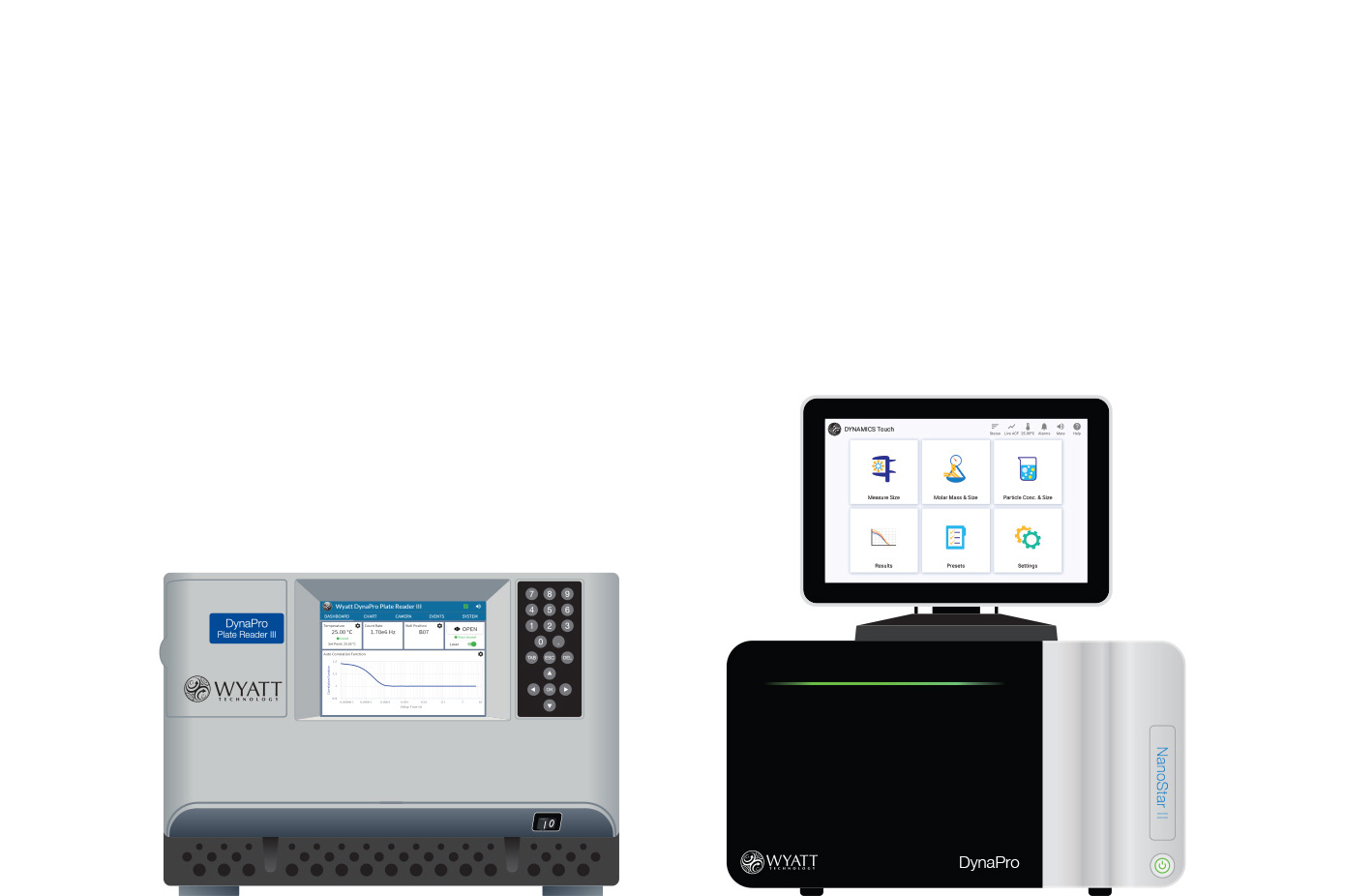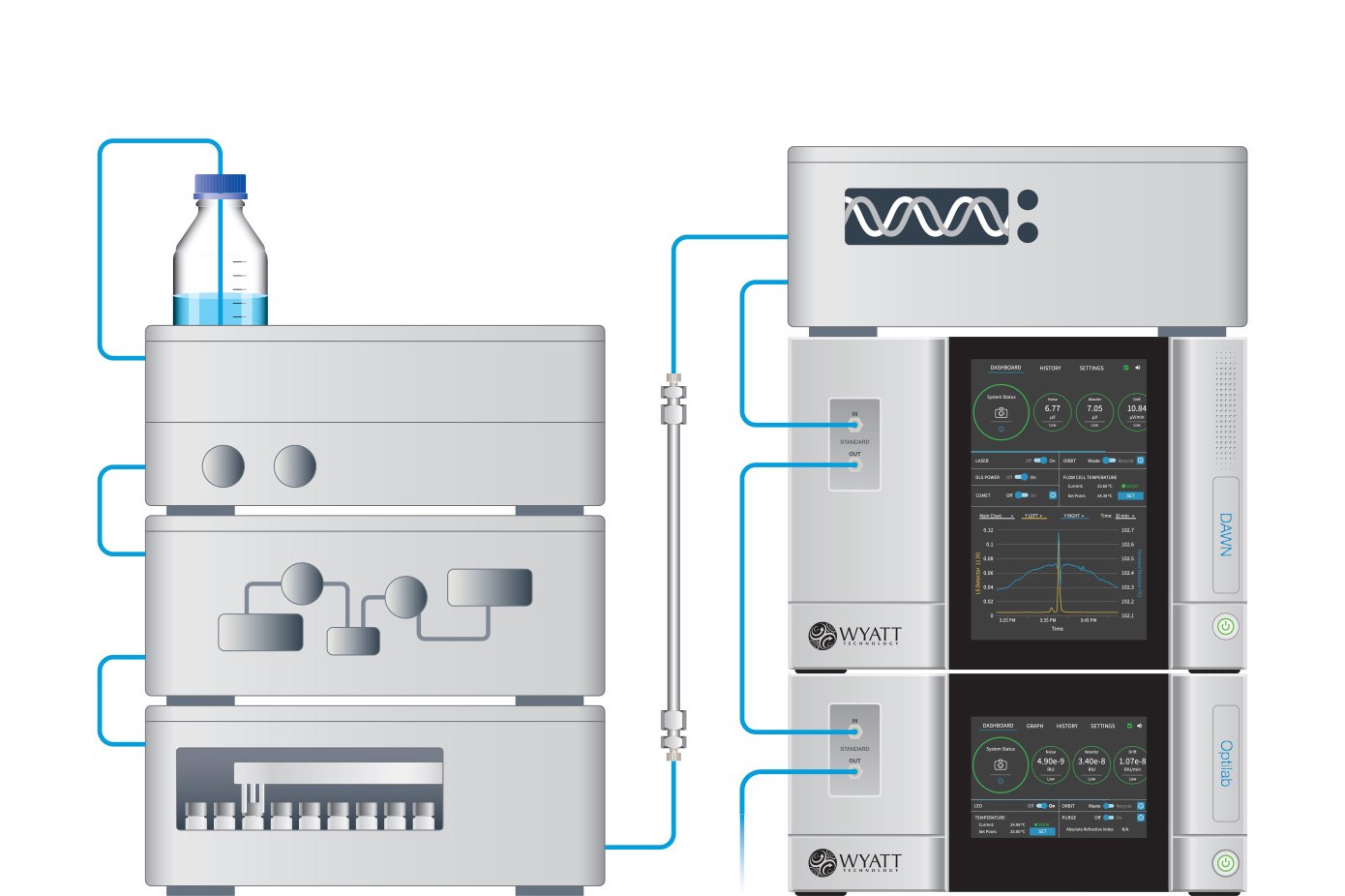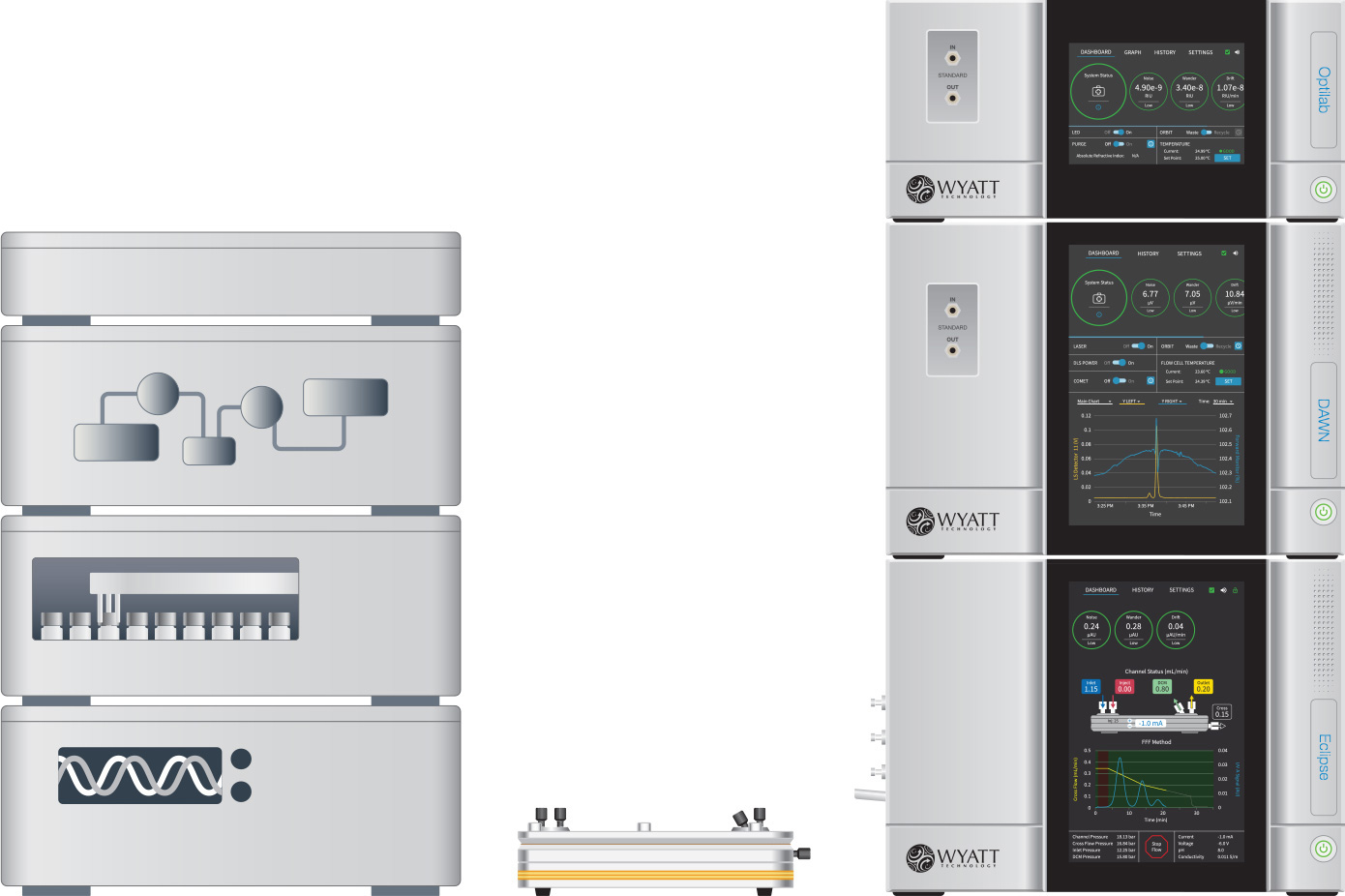AAV purity, identity and extended characterization
Information about the composition and homogeneity of AAV formulations allows one to detect and identify the desired product and impurities. Confirming the identity and purity of AAVs by their measured capsid molar mass and size is a robust internal control method.
Multi-angle light scattering (MALS) with a concentration detector offers absolute molecular weight and size measurements without needing calibration curves. Dynamic light scattering (DLS) measures size as hydrodynamic radius Rh and is valuable for small-size analytes like AAVs.
Determining the molecular weight of AAV vectors
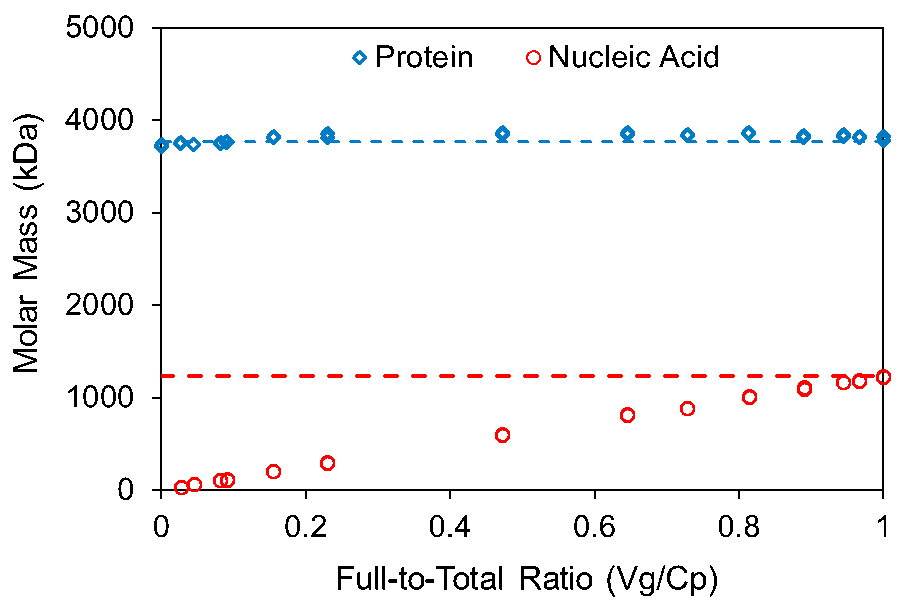
Confirm the accuracy of Vg/Cp measurements via the molar masses of individual components.
While there are many ways to determine the molar masses, or molecular weights, of AAVs, only MALS quantifies absolute molecular weights in solution, rapidly and effectively. It combines the precise measurements of light scattering intensity and concentrations for a rigorous, first-principles calculation of solution-property molecular weights—making no assumptions of conformation or shape, and no perturbations to the sample.
- MALS is a first-principles method that does not rely on calibration standards.
- Fully automated with high sensitivity: ~ 5x1010 particles/mL.
- High precision: 2%. This means that changes in molar mass ≥3% can be detected and investigated further.
- Determines both capsid and genome molar mass.
How to measure AAV size in an impure sample?
AAV size in an impure sample containing oligomers and monomers can be determined by conjugating a separation technique like size–exclusion chromatography (SEC) or field-flow fractionation (FFF) to a MALS or a DLS detector.
MALS delivers the mass-averaged root mean square radius (Rg), as shown in the figure to the right. However, accuracy in Rg measurements is limited to radii larger than10 nm. DLS measures size as Rh and is better suited for monitoring radii of AAV monomers and their oligomers. Integrating a WyattQELS™ module into a MALS detector, or transferring light collected in the MALS detector via optical fiber to a batch DLS detector such as the DynaPro™ NanoStar™ or ZetaStar™, enables quantifying Rh of both AAV monomers and oligomers in a single 30-minute experiment.
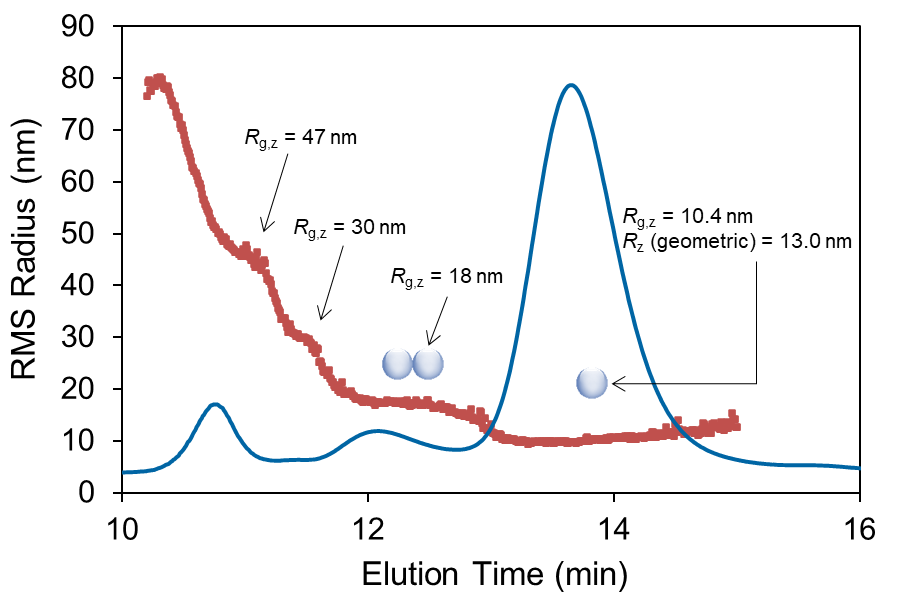
SEC-MALS chromatogram reveals different oligomeric states of AAVs.
DLS instruments in batch mode can also be used to measure size of AAV monomers and oligomers separately, provided that the oligomers are 3-5 times larger than the monomer.
The DynaPro™ Plate Reader provides low-volume, non-destructive AAV size and size distribution of thousands of samples at a time. Since the DynaPro Plate Reader measures directly in standard microwell plates, consumable and labor costs are minimal, and automation tools such as robotic pipettors may be incorporated into the workflow.
The DynaPro NanoStar or ZetaStar performs the exact same measurements in a quartz cuvette, with volumes as low as 2 µL. Size and polydispersity may be measured in disposable cuvettes with just 4 µL sample volume.
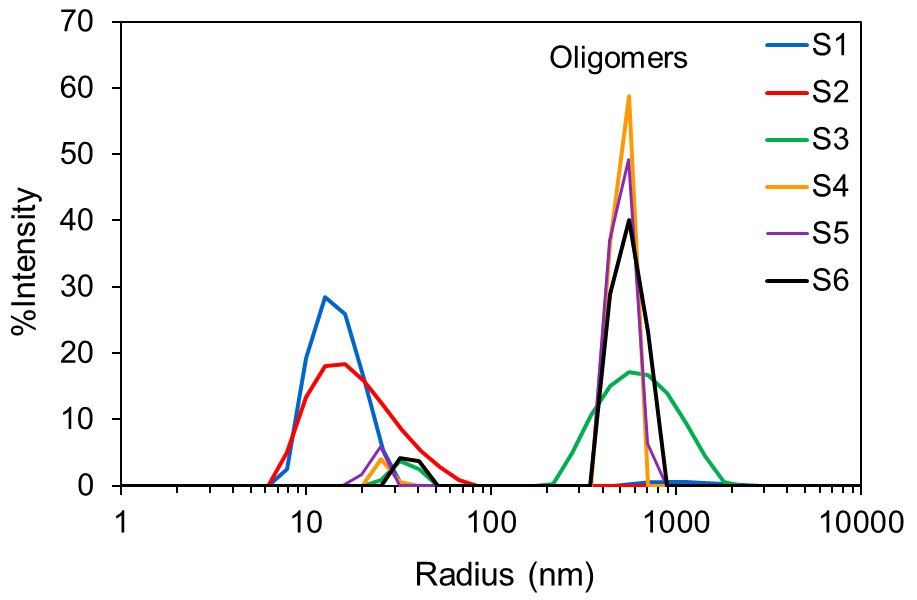
Batch DLS informs on the presence of AAV oligomer impurities.

